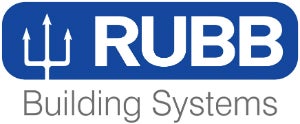Rubb Group provides sustainable and cost-efficient aviation hangars for the aerospace industry. The company talks about its solutions in this informative Q&A.
Rubb aircraft hangars use state-of-art membrane materials and frames, can you explain the difference between the membrane materials & frames used by Rubb hangars and other competitive companies? How are they more economical compared to other Aviation buildings?
Compared to traditional hangars, Rubb structures are modular-designed, which helps to reduce the overall structure weight. The framework itself is hot-dip galvanised, post-production, to eliminate any chance of corrosion. Galvanising is the process of metallurgically bonding a tough coating of zinc into the steel surface. Microscopic analysis shows that there is no demarcation line between the steel and zinc, but a gradual transition through a series of zinc-iron alloys. The protective coating is fused into the metal and therefore will give much better protection than other coatings, such as paint.
To continue the reduction of overall structure weight, support the ease of construction and to save costs, Rubb hangars are clad with tough PVC impregnated polyester fabric. The membrane is tensioned over the steel structure and anchored to the foundations. The fabric is tested with respect to tensile strength, elongation, tearing strength, bursting strength, coating adhesion and resistance to flexing, according to BS 3424. The fabric is flame retardant and self-extinguishing to BS 5438 Test 2B.
The fabric has a manufacturer’s warranty of ten years, but Rubb hangars have been in use around the world and have proven to last more than 40 years with the original PVC sheets. Rubb hangars can also be insulated using Thermohall PVC cladding technology. This comes in a number of thickness options, but Rubb would recommend 150mm Thermohall for an aircraft hangar, which provides a U-value of 0.25 W/m2K, meeting British Building Standards.
Rubb hangars are designed to British Building Standards or Euro Codes with regards to wind speeds and snow loadings. Like a traditional hangar, Rubb structures are designed to accommodate the full weight of snow acting on the roof. Being designed this way makes a Rubb structure a direct and comparable alternative to a traditional hangar.
With the reputation of tackling particularly difficult & unique projects, can you explain with an example any project that was particularly challenging?
A particularly challenging project that Rubb successfully overcame was the easyJet hangars at Gatwick Airport. In 2016 Rubb provided easyJet with a twin span hangar measuring 91.5m wide x 60m long. Rubb also worked as the main contractor on this project overseeing all works, from the groundworks to internal fit out. The first sections of the modular steelwork were constructed on December 14th and by May 19th easyJet was able to introduce the first aircraft into the hangar. For a project of this size, and within a challenging and complicated working environment, it was great to see it all come together with great success. Brendan McConnellogue, easyJet’s Head of Maintenance, commenting on the project, said: “The Rubb team who worked on site were absolutely first class.”
“The successful delivery of this project, which has been challenging both in terms of scale and its timeline, is another example of what can be achieved through easyJet’s innovative and lean approach, not only meeting a tight timeline, but also creating strong sustainable partnerships to deliver market-leading operational performance.”
How does the innovation of multiple hangar door options provided by Rubb Hangars help suit client requirements? Can you explain some of its features? What are the different types of door options provided by Rubb?
Rubb works alongside a number of leading door manufacturers, depending on the clients’ requirements and hangar size. Hangar doors can either be vertical lifting or horizontal sliding. The advantage of using a Rubb hangar is the close relationship we have with our door partners, including advanced door technologies and their seamless integration with Rubb structures. Rubb structures are custom designed for every project, so the most effective and efficient hangar doors can be selected and connected straight to the hangar’s main steel framework. This can be designed to be connected on the inside or outside face of the end span. There is no need for an extra supporting frame to be designed and manufactured to connect both together. This saves on manufacturing and construction time and cost.
What is the next step in aircraft hangar technology after portable hangars?
The technologies we are seeing in the hangar market are solar power and self-efficiency. We have been exploring how roof and gable surfaces of buildings can harvest and utilise solar energy to power maintenance and operations within hangar systems.
The foundation on which a hangar is erected is the most important aspect in the construction of an aircraft hangar. What are the different types of foundation options on which a Rubb hangar is constructed? Also, can you name a few foundation options not suited for hangar construction?
Rubb hangars, like traditional hangars, need suitable foundations to take structure loadings. Depending on the existing surface, Rubb would need a minimum of a concrete upstand ring beam or concrete foundation pads to support the structure only. Providing these types of foundation arrangements, instead of a completely new slab, massively reduces project costs and speeds up construction time. Foundations such as ballast weights and spiral anchors are not suitable for narrow-body hangars and wide body hangars due to the weight of the structure. Rubb hangars can be classed as semi-permanent and are fully relocatable. They can be modified but a traditional foundation is still needed.
Rubb hangars are known for fast and efficient installation of hangars. What is the estimated time required to construct a temporary hangar?
Depending on the size of the hangar, Rubb can complete a project, from initial enquiry to fully operational status, within a few months. An example would be easyJet where Rubb supplied a 91m wide, twin span x 60m long narrow body hangar in approximatively 30 weeks. This included foundations, hangar, hangar doors, lighting, electrics, heating, ventilation and offices.
Can you throw some light on the growing competition in the field of Aircraft hangars? What is your strategy to beat the growing competition?
The industry is forever changing and growing and Rubb needs to stay ahead of the game by making sure we offer the latest technologies and best quality solutions to our customers. Rubb strives to ensure that our custom designed hangars continue to be cost effective. This could be by minimising heating space and costs or looking at the long term strategic plan of a company and working with them to create a hangar that can adapt and move with the growth of their business. By continuing to provide excellent and honest customer service around the world, Rubb is looking forward to another successful 40 years in aviation.











